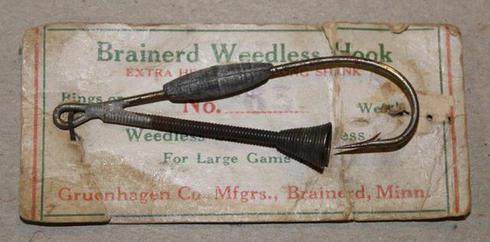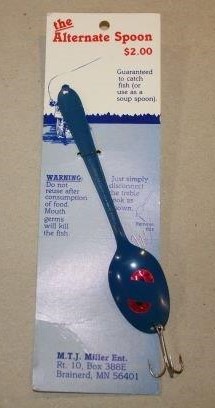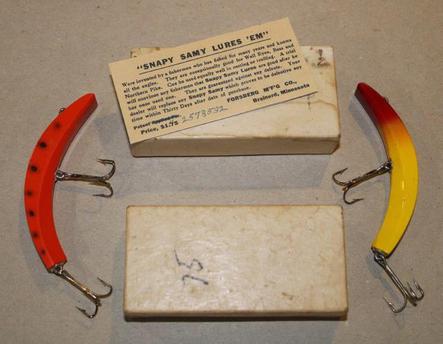Minnesota Lures
Enter your text here...
Brainerd
Originally Ojibwe territory, Brainerd was first seen by white men on Christmas Day in 1805, when Zebulon Pike stopped there while searching for the headwaters of the Mississippi River.
In these early years the relationship between the settlers and the Indians was complicated. The most famous example of this tenuous relationship was the so-called "Blueberry War" of 1872. Two Ojibwe were hanged for allegedly murdering a missing girl, and when a group of Indians approached the town, troops from nearby Fort Ripley were called in to prevent a potential reprisal. As it turns out, however, the Ojibwe only wanted to sell blueberries and the settlers narrowly avoided a bloody misunderstanding.
J. Gregory Smith, founded and named Brainerd, Minnesota after his father-in-law (Lawrence Brainerd) and wife.
On October 27, 1933, the First National Bank of Brainerd became briefly famous when it was held up by Baby Face Nelson and his gang.
Of interest is the outbreak of the Brainerd diarrhea that involved 122 people in 1983. Unpasteurized milk was implicated as the cause, and no fear of reemergence exists.
Rotoeye Bait Company
Not much is know about this lure company. I believe they only made this one lure, the RotOeye Wiggler. It is a spoon-type lure that has two colored plastic flutes that spin in different directions when the lure is retrieved.
I met a man in Brainerd who told me this lures were sold in 1947.
The Brainerd Bait Company
Believed to have started in the mid-1920s by Bernard M. Gruenhagen, who first had the company under his name (see below). His son, William H. Gruenhagen, also began working for the company and patented a few lures himself.
Most metal lures are marked with a "B" or "BBCO". The one with a plain "B" could have been made before the Brainerd Bait Co name.
In the early 1930s, the company was sold to some men and was moved to St. Paul and became better know under the trademark "10,000 Lakes" at a later date.
The sponge-lie bait featured a treble hook inside of a soft sponge body...making the lure weedless.
Al-Lure-O Baits
Quad Slip On Company
This hook assembly was intended to add hooks to a live minnow.
This is the only carded lure I have found from this company.
Simi & Son
As far as I know, this company only made this spinning attachment to add to your existing line.
Bernard M. Gruenhaen began making lures around 1918.
Some of his earlier spinners had a "B" stamped on them.
Around the mid-1920s, he started labeling his baits "BBCO" and calling the company "Brainerd Bait Co".
(see above)
Gruenhagen Co, Mfgrs
Forsberg Mfg Co
M.T.J. Miller Enterprises
The Snapy Samy bait was a "Lazy Ike" lure that, at one time, only sold for $1.75...and later was bargained priced at $0.75 as stated on the box and even written on the top of one of the lures.
I usually don't collect or feature lures made after 1970, but I thought this "spoon" was rather clever.
If all else fails, you could remove he hook and just use the spoon.



